Nate Fleming's Blog, page 31
January 20, 2015
Thimblerig’s Interview ��� Filmmaker Doc Benson
Over the past several months I’ve enjoyed becoming networked with several Christians who are involved in the filmmaking industry, and who have what I consider to be a healthy and balanced view on living your faith out while attempting to create film art for the glory of God.
One of the filmmakers I’ve gotten the pleasure of meeting (virtually, anyway) is Doc Benson, a man who wears many, many hats: producer, newscaster, station manager, voice artist, feature film actor,��pastor, church consultant, and restart specialist. ��Doc has been involved in media and ministry since 1990, and has recently written, produced, acted in, and directed his first feature-length film, Seven Deadly Words.
One very interesting thing that Doc has done is started an effort to distribute a copy of Seven Deadly Words to every church in America. ��This is an amazingly generous undertaking, with potential far reaching impact. ��If you would like to learn more about this effort, you can find out more by visiting the website, www.givingchurcheshope.org.
I’m pleased and honored to have Doc Benson be a part of the third interview in my Thimblerig’s Interviews series.
Please Introduce yourself.
Hi, I���m Doc Benson��� Director, Writer, and Producer and all around nice guy.
How did you get involved in filmmaking?
While working on my doctorate, I took a break from ministry and became a producer and on-air talent for a CBS news affiliate. I eventually became a TV station manager in a small community in New England.���� I had the opportunity to work on documentaries and in ���Disappearances��� with Kris Kristofferson. That experience solidified my desire to enter the field of film production. Eventually I studied under Dov Simmons (the same teacher of Quentin Tarantino and Will Smith among others). From all this, I crafted the script and production that eventually became the award-winning feature,��Seven Deadly Words.
Who have been some of your most profound creative influences as an artist?
Well���.Let me think a minute. I���d have to say that I draw on several sources for inspiration. First and foremost I���d have to say Frank Capra. Some directors like to tell stories about unapproachable people ��� people of the 1%. Capra, with films like Mr. Smith Goes to Washington, was best able to capture the irrepressible optimism and daily courage of ordinary men and women.
I am also a big fan of classic radio programs. The ability to capture an audience and transport them into another time and place merely with the spoken word. Sure, the maxim is ���show it, don���t say it���, but if the word pictures you create are not on par with the images you paint, you will lose your audience. Script and story matters.
By the way, I have to agree with Orson Welles when he stated that Buster Keaton’s The General is “the greatest comedy ever made, the greatest Civil War film ever made, and perhaps the greatest film ever made.”
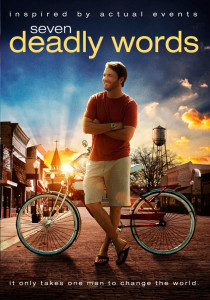 Please give a synopsis of your film, ���Seven Deadly Words���, and tell us a bit of the history of the film.
Please give a synopsis of your film, ���Seven Deadly Words���, and tell us a bit of the history of the film.
Inspired by actual events, this docudrama follows the community and the congregation of Egypt Valley Church as they try to overcome the Seven Deadly Words: ‘We’ve never done it that way before.’ The church is out of funds and out of touch with the community. New pastor Evan Bennett sets out to change things for the better with the help of some folks in and out of the church. But there’s a problem… The Haman Family has been running things a long time, and they don’t like change. When their control and ministry comes under scrutiny, the Hamans decide to fight back. Evan and his family soon learn how far one family is willing to go to preserve the status quo.
For almost two decades I served as a pastor, church planter, and restart consultant. I have seen both the good and bad about churches going through change. I���ve even lived through some ���horror stories��� of my own. I thought I would combine some of those ideas, stories, and debates, and put them together into a film that could tell the story of one church, going through needed change. Folks may be shocked at some of the things that happen, but I am sorry to say that much of the film is inspired by actual events. In the end, however, it is a story about overcoming the conflict surrounding change, and growing in a direction that is Christ centered and ministry focused.
Script development began back in 2011. We assembled the cast and crew in early 2012, and began principal photography on June 9th of 2012. The premiere was held near the end of 2013, with distribution starting in the summer of 2014. We���ve been blessed to have won a number of awards for the project. It was even screened in Cannes during this year���s festival.
What were some of the biggest challenges you faced in developing the project? What surprises did you experience along the way?
Funding was the biggest challenge. We set up an LLC and secured members to invest in the project. Being that it was my first film, we were in uncharted waters. It took some time to find investors with the vision and courage to recognize the potential in the film.���� Selecting a location was also paramount. We partnered with Connersville, Indiana, a community that was supportive to the extent that the provided resources for us at no cost and even let us use the city and local business names in the movie. This was a win-win in that we were able to reduce art costs and production expenses, and they gained a promotional boost with every showing of the movie. I strongly believe that these types of partnerships help to boost production value in lower budget films while reducing actual spending.
 Production wasn���t as big a challenge as you would think. I had very detailed call sheets, shot lists, and script notes. Good planning made the days run fairly smoothly.���� Because of our preparations in advance, we often finished with filming by mid afternoon each day. I didn���t want it to feel like an indie set, but more like a SAG set. The professionalism on set gave the cast and crew time to rehearse, relax, and socialize in the evenings. We still finished the entire film, securing all shots we needed plus some, in the 18 days scheduled (six days shooting and one for rest per week). I believe that well rested actors and crew can give a much better performance in fewer takes than a crew working 16 to 18 hours a day on a mismanaged set.
Production wasn���t as big a challenge as you would think. I had very detailed call sheets, shot lists, and script notes. Good planning made the days run fairly smoothly.���� Because of our preparations in advance, we often finished with filming by mid afternoon each day. I didn���t want it to feel like an indie set, but more like a SAG set. The professionalism on set gave the cast and crew time to rehearse, relax, and socialize in the evenings. We still finished the entire film, securing all shots we needed plus some, in the 18 days scheduled (six days shooting and one for rest per week). I believe that well rested actors and crew can give a much better performance in fewer takes than a crew working 16 to 18 hours a day on a mismanaged set.
Surprise? I guess I���d have to say the reaction from mainstream festivals. We have received more awards and recognition from secular festivals than faith-based festivals. Maybe it���s because our story exposes areas in church life that need improvement. Folks who have never stepped foot in a church tell us that they can relate to the conflict over the seven deadly words. Some have even told us war stories of personal experiences.���� To me, that���s high praise.
What are your thoughts on the state of filmmaking in the Christian community now, and your predictions for where it might go in the future?
We are trapped in a moment in time where church audiences and the Christian-industrial complex tend to prefer movies that don���t take risks. Movies with milquetoast stories and construction make millions, while films that break new creative boundaries barely scrape by. I call these ���Godsploitation��� films, after the ���Blackspoitation��� movies of the 1970���s. They are formulaic for a target market with come to Jesus moments and car salesman subtlety.
Godsploitation films continue to be made because they have a ready audience, and investors like ready audiences. It���s a catch 22. We need investors to take chances on redemptive films in new genres, but we also need believers to accept and promote these new movies. Some producers are starting to break out of this mold, but we have a ways to go before we see a wide swath of redemptive films covering multiple genres.
���Faith-based��� films are typically also family friendly, but the Bible is often not family friendly. How would you advise Christian artists as they think about portraying the grittier sides of life? ��
Yeah. If you made an accurate movie about parts of the Old Testament, it would be boycotted by many churches!
Life isn���t clean. Good guys aren���t perfect. Bad guys aren���t twisting a moustache and wearing a cape. We don���t exist in a Pollyanna world. If you want to make characters that are overcomers in Christ, you need to give them something to overcome. Give them challenges, problems, realism, grit… especially if your target audience includes Pre-Christians.
 But that doesn���t mean you have to show EVERYTHING in order to make your point. Take horror films: Hitchcock���s Psycho did more to scare me by showing syrup in a drain than any blood soaked slasher film of today ever will. Or how about just before the fight scene between Ernest Borgnine and Frank Sinatra in From Here to Eternity. Borgnine sees a photo of Sinatra���s sister, and whispers something in the ear of Montgomery Clift . You don���t hear what it was, but it was bad enough to cause Sinatra to grab a chair and start swinging. ��Maybe it���s the radio fan in me, but if Christians want to make realistic films without gratuitous violence or over the top language, take a cue from the masters of the golden age���imply. Your audience���s imagination will do the rest.
But that doesn���t mean you have to show EVERYTHING in order to make your point. Take horror films: Hitchcock���s Psycho did more to scare me by showing syrup in a drain than any blood soaked slasher film of today ever will. Or how about just before the fight scene between Ernest Borgnine and Frank Sinatra in From Here to Eternity. Borgnine sees a photo of Sinatra���s sister, and whispers something in the ear of Montgomery Clift . You don���t hear what it was, but it was bad enough to cause Sinatra to grab a chair and start swinging. ��Maybe it���s the radio fan in me, but if Christians want to make realistic films without gratuitous violence or over the top language, take a cue from the masters of the golden age���imply. Your audience���s imagination will do the rest.
Along those same lines, do you think it���s possible for Christian filmmakers to make R-rated films? If so, how would imagine that would look, and what would be the risks?
I think that the movie My Son gave us a window into what an R-rated movie with a solid redemptive message could look like. Unlike many in the church, I felt that the movie probably deserved an R rating for drug use and violence, but that didn���t mean it was a bad movie. On the contrary. Keep in mind that the MPAA rating system is subjective at best and biased at worst. There are many mainstream films that receive ratings lower than deserved.
But really, who cares? Hollywood may release more R rated films, but over and over, studies have shown that PG and PG-13 movies make more money. Remember, you need investors, and investors like proven profitability.
Don���t tell me you couldn���t make that R rated film a PG-13 with just a few tweaks. Drop some of the language. The overuse of profanity is a crutch that weak writers use to create fake tension. Suggest some of the sex instead of just showing it. It will take more creativity, but will be more profitable in the long run and less apt to be shunned by the church community.
What general advice would you impart to emerging filmmakers, especially those who are approaching filmmaking as a calling or a ministry?
First, expect to be disappointed. There are going to be many hours of frustration, many dead end roads, and many moments of disillusionment. If you think that the faith-based film industry is paved with golden intentions and receptive hearts think again. There are egos, agendas, and self-centered prima donnas here too. They get away with it by disguising their pomposity in a shroud of spiritual language and religiosity. It will be very frustrating, but don���t let it rob you of your zeal and purpose. Keep the faith.
If you want to make a million dollar feature, show them you can make a successful $200,000 feature. If you want to make that, show them you can make a $60,000 film. To make that, make a great $20,000 movie and so on. Work your way up the path of budget and creativity. Don���t try to start too big, nor should you remain stuck in ultra-low budget purgatory. And for heaven���s sakes, no more shorts!
The other thing I would recommend is figure out what film-making job you are good at, and learn as much about that role as possible. Right now most redemptive films are made using the ���Lone Ranger��� model���One guy or gal is the director, producer, dp, grip, chief cook, etc. That���s not how the industry at large works. A quality production brings together a diverse staff of talented individuals uniquely gifted in their task. I myself have worn a number of hats, but have focused on directing as my calling.
Collaborative efforts will require bigger budgets, which will require greater investment, which will require better stories and quality to attract investors. Therefore, as we move to collaboration, we will see better movies.���� Maybe instead of you and four other people each making an okay 10 grand film, you could work together to make an amazing 50 grand feature or web pilot? Leave your egos at the foot of the cross, please.
Can you tell us what you have planned for any future projects?
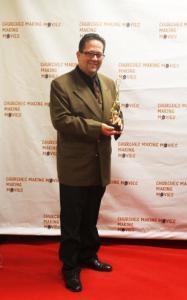 Ever since Seven Deadly Words and winning those three best director awards, I have been asked to direct for other producers. I look forward to those directing opportunities and others that may come along.���� In the mean time I have another film in development entitled The Publication, which will include actors from SDW as well as talented folks like Lee Perkins from Foxcatcher and Nancy Stafford from Matlock. We are still gathering investment on this one.
Ever since Seven Deadly Words and winning those three best director awards, I have been asked to direct for other producers. I look forward to those directing opportunities and others that may come along.���� In the mean time I have another film in development entitled The Publication, which will include actors from SDW as well as talented folks like Lee Perkins from Foxcatcher and Nancy Stafford from Matlock. We are still gathering investment on this one.
I also have other scripts that I would love to direct and partner with a production company or church to make. If a church was interested in becoming a producer of redemptive film, I would come in, help train your people, assist with the production planning, and then direct the film.
The other thing happening is a campaign called Giving Churches Hope. There was so much positive feedback about our last movie and the value it had for church audiences, we are working with several church organizations and non-profits in an effort to give a copy of ���Seven Deadly Words��� to every church in America. Folks can learn more at the campaign website GivingChurchesHope.org or by contacting me directly via DocBenson.org .
—
Again, a big thank you to Doc Benson for taking part in this interview, and for giving so much great information for those of us interested in helping Christians excel in filmmaking and other artistic endeavors.
More about Doc…
Doc Benson’s article, The Little Red Hen for Filmmakers
Find out more information about Doc Benson:��DocBenson.org
Giving Churches Hope website: ��Giving Churches Hope
Doc Benson��on Twitter and Facebook:��@CuldeeDoc��&��/EricDocBenson
Seven Deadly Words��on Facebook: ��/SevenDeadlyWords
Past Thimblerig interviews…
Thimblerig’s Interview of Michael B. Allen & Will Bakke, makers of Believe Me
Thimblerig’s Interview with Author and Filmmaker Bill Myers
Stay tuned to the Thimblerig���s Ark��blog for more interviews with artists doing interesting non-conformist work in the name of Christ, and come join the��Sacred Arts Revolution conversation over at Facebook!
January 14, 2015
2014 Thimblerig’s Ark Blog in Review
The WordPress.com stats helper monkeys prepared a 2014 annual report for this blog.
Here’s an excerpt:
The Louvre Museum has 8.5 million visitors per year. This blog was viewed about 140,000 times in 2014. If it were an exhibit at the Louvre Museum, it would take about 6 days for that many people to see it.
Click here to see the complete report.

January 10, 2015
Remembering Scottish Musician Martyn Bennett
Martyn Bennett.
Do you know the name?
If you know Scottish music, it’s a name you might know. If you know Scottish music, it’s name you should know.
His could have been a name that most all would have known, regardless of our fondness for music from Scotland. There are some names that deserve to be known. But life has a way of writing our scripts in surprising and sometimes cruel and tragic ways.
I’m getting ahead of myself.
Before I tell you more about Martyn Bennett and why I’m writing about him, you need to hear him. I think we’ll start with the first track from his second album, Bothy Culture. The song is called Tongues of Kali.
Oh, and make sure you turn up the volume.
How I heard about Martyn Bennett is a bit of a story.
My wife and I were married in 1998 on New Year’s Eve in Edinburgh, the day of Hogmanay (the last day of year in Scottish). It’s also the day of one of the biggest New Year’s Eve parties in the world, as Edinburgh is transformed for one night into a citywide mix of free concerts, dancing, celebratory kissing, and the kind of joyful revelry that should always happen on New Year’s Eve.

The crowds at Hogmanay.
Considering we had a small wedding that included only five, we made the decision that Edinburgh’s festivities were actually our wedding reception, with thousands of guests and music and fireworks. As night fell, I put on my rented kilt, and my new bride and I headed out to see what the city had arranged to celebrate our new marriage.
Weaving our way through the festive crowds, we came upon a stage on a fairly empty city square being prepared for a concert. We had no idea who would be performing, but since few people had yet stopped at the spot, and since I saw different kinds of Scottish musical instruments being handled on the stage, we decided to park ourselves and enjoy watching people until the concert began.
A man with baggy camouflage pants and long hair in dreadlocks came out on stage and started tuning instruments, creating an immediate disconnect for me. He didn’t fit my image of a traditional Scottish musician. With the dreads, he looked more like a reggae artist. Were we really about to ring in the new year in Scotland with reggae music?
But since he was tuning pipes and the other Scottish instruments, it would had to be Scottish music, right?
The crowd had started to build, effectively trapping us at the front of the stage, and so we had no choice but to wait and see.
When the performance started, I was transfixed by what I heard coming from the musicians onstage. It was most definitely Scottish music, but it was infused with club beats and samples and sitars and syncopated rhythms and sounds like I had never heard before.
This was music.
Music full of passion.
Music full of life and energy.
It wasn’t safe music, like some other attempts at blending traditional Celtic music with modern sounds. It was raw. It was risky.
 It was, I discovered, a musician named Martyn Bennett.
It was, I discovered, a musician named Martyn Bennett.
And things just got better.
My wife, who is a native of Kazakhstan, started squealing (yes, she squealed) and hopping up and down as she realized she’d seen the dreadlocked musician perform at the state opera house in her home city of Almaty, Kazakhstan just a few weeks earlier, when he and a small group of musicians had travelled there as guests of the British Consul.
It was like a special gift, to have the band at our wedding reception be so fantastic and unique, and to have them playing a return engagement especially for my wife. Well, at least to us it was especially for my wife.

Photo credit Sadie Dayton
The concert that night was unforgettable, especially when midnight came, and the city erupted in a massive fireworks display. Bennett led the now overcrowded square in a traditional singalong of Auld Lang Syne that segued into an audience-pleasing high energy song that would be well-met in any rave. We danced and celebrated well into the night, one of the best nights of my life, and an amazing way to start our married life.
In Edinburgh, in the days that followed, I managed to find a copy of Bennett’s Bothy Culture, which we would listen to frequently, fondly.
Soon after, my wife and I moved to Kazakhstan, where we lived for fourteen years. One day in 2005, I decided to hunt down information about the dreadlocked musician that we had enjoyed so much that New Year’s Eve in Edinburgh. I loved the CD, and wanted more. We would be returning to the U.S. for the summer, so I went searching, knowing I would stand a pretty good chance of tracking down any new music in the states.
To my heartbreak, I found that Martyn Bennett had died on January 30 of that year at the ridiculously young age of 34. He’d died of Hodgkin’s Lymphoma, which he’d been fighting since being diagnosed in November of 2000.
I couldn’t believe it. Couldn’t imagine it. That energetic, creative, driving force, who I’d watched blow across Hogmanay like a hurricane – was gone?
 From what I’ve read, as Martyn’s illness weakened him, he became unable to tour, and eventually had to stop playing his instruments. But this didn’t stop him from recording his final album, entitled Grit. Bennett described the idea of Grit this way:
From what I’ve read, as Martyn’s illness weakened him, he became unable to tour, and eventually had to stop playing his instruments. But this didn’t stop him from recording his final album, entitled Grit. Bennett described the idea of Grit this way:
Split between the songs of travelling people (Roma) and the Gaelteachd traditions of the Hebrides (Grit) brings together by far the strongest links to the ‘real’ folk culture in Scotland. Virtually all the songs and narrative were sampled from vinyl records or from original quarter-inch tape recordings, the sources of which were mostly recorded from 1950 onwards…
Rhythmically and sonically I have gone to great effort in this recording. In recent years so many representations of Scotland have been misty-lensed and fanciful to the point that the word ‘Celtic’ has really become a cloudy pigeon-hole. This album was a chance for me to present a truthful picture, yet face my own reflection in the great mirror of all cultures.
When I found out that Martyn Bennett had died, it’s hard to describe how devastated I felt, considering I had never met the man. I really didn’t even know much about him. And I hadn’t even taken the time to drop him a note thanking him for the important part he played in the start of my marriage.
His music had travelled the globe with my family several times, and I’d never tried to let him know.
That’s the kind of thing we think about doing, but rarely ever do. And we almost always wind up wishing that we had.
So, Martyn, this is my note. We’re coming up on ten years since you were liberated from your suffering, and this blog post is my attempt to honor you, and thank you for all the joy and pleasure you brought to so many people in the too-short time you were given to share your gift. Especially the joy and pleasure you brought to us.
And it’s also my attempt to help more people to know your name, and your music.
Because yours is a name that deserves to be remembered.
—
Martyn Bennett lived a full life, pursuing his dreams of preserving the musical heritage of Scotland’s past while embracing the progressive nature of Scotland’s musical future. He was a classically trained musician, a meticulous musical perfectionist with a love of sampling and house beats. He was – and continues to be – an inspiration to countless young musicians across Scotland, and beyond.
Please read more about Martyn’s life in his own words, by reading the bio he wrote on his blog.
Also, read more in depth about Bennett’s life from Herald Scotland journalist, Rob Adams.
Finally, enjoy some of the music of Martyn Bennett, then share it with others.
Extreme biker Danny Macaskill’s The Ridge, with soundtrack Martyn Bennett’s Blackbird from Grit
Hallaig, from Bothy Culture, and the award winning short film by Neil Kempsell
Swallowtail, a more traditional song by Martyn Bennett, with scenes from Man of Aran
Sky Blue by Peter Gabriel, the Martyn Bennett mix. The last recording Bennett made before his death.
And if you have the chance, try to see GRIT: The Martyn Bennett Story.

January 6, 2015
9 Things Hollywood Can Do To Make The Perfect Faith-Based Film
Dear Hollywood,
I know something about you.
Don’t worry, it’s not about a new scandal, and you haven’t been hacked again, as far as I know. It’s simply this: you have been trying desperately to figure out how to crack the faith-based film formula, and while you have had moderate success here and there (even a broken clock is right a couple of times a day, right?) you’ve also had plenty of misfires.
I know that you are frustrated.
It must be so disheartening! After all, everyone knows the formulas for your non-faith-based films that have served you so well:  Joseph Campbell’s Hero’s Journey; Blake Snyder’s Save the Cat; Robert McKee’s Story, but like Indiana Jones in his hero’s journey, you’re staring at a pile of amazing treasure, and you have the enormous obstacle of a great chasm in the way.
Joseph Campbell’s Hero’s Journey; Blake Snyder’s Save the Cat; Robert McKee’s Story, but like Indiana Jones in his hero’s journey, you’re staring at a pile of amazing treasure, and you have the enormous obstacle of a great chasm in the way.
And you don’t have a whip.
 The wealth you could accumulate with that formula in your hands is unimaginable, and I know that you’ve thought about it. With the knowledge of how to successfully tap into those middle America faith-based box office ticket sales, you could finally add the new wing to your beach house in Malibu. You could finally buy that new candy apple red Jaguar F-type R you’ve had your eye on and park it in your driveway for everyone to see. You could finally get that plastic surgery you’ve been dreaming of, ever since Renee what’s-her-name got so much publicity for making her big face change.
The wealth you could accumulate with that formula in your hands is unimaginable, and I know that you’ve thought about it. With the knowledge of how to successfully tap into those middle America faith-based box office ticket sales, you could finally add the new wing to your beach house in Malibu. You could finally buy that new candy apple red Jaguar F-type R you’ve had your eye on and park it in your driveway for everyone to see. You could finally get that plastic surgery you’ve been dreaming of, ever since Renee what’s-her-name got so much publicity for making her big face change.
But you just don’t have a whip.
Well, breathe a sigh of relief my friends, and schedule your consultation with Dr. Grossman, because after months of research by the tireless staff at the Thimblerig Institute for Faith Based Film Studies©, with untold hours spent watching a variety of faith-based film successes and failures, guess what?
We’ve done it.
We’ve cracked the formula.
We know what you need to do.
And we’re giving this information away, for free.
This won’t be as earth-shattering as the mythical memo sent by Christopher Vogler while he was working for Disney, but these nine things might be just what you were looking for.
So get your assistant to take notes.
9 Things Hollywood Can Do To Make The Perfect Faith-Based Film
1. The Perfect Christian Film needs to look good.
This first point seems pretty obvious, but the history of faith-based film may lead you believe that Christians like films that aren’t shot and edited well. Nothing could be further from the truth. Recent films have proven that Christian audiences want their films to look as good as Hollywood’s best, so don’t try to save money by hiring a kid just out of film school. Pony up the dough and get competent, experienced people to shoot, sound, and edit the film.
Don’t worry. You’ll save money on acting, as the mass of faith-based audiences don’t seem to mind amateur actors, especially if said actors play supporting characters, and they are outspoken Christians in real life.
Save more money and get your cousin who went to music school to compose the soundtrack on his Yamaha MOX6 keyboard. The score is inconsequential as long as you can get a few songs by current contemporary Christian musicians to play over the opening and closing credits. That’s the stuff the audience will eat it up.
Look here for some recent popular CCM options.
2. Message is King.
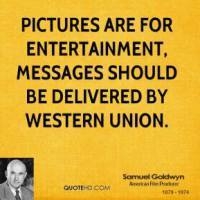 Good news! You can also save money on screenwriting, as typical faith-based audiences are mostly concerned about the message rather than the story. That being said, it’s important that you run your message by a few friendly Christian leaders to make certain that it’s kosher before releasing the film, which will also probably get you some good bullet point quotes you can use to further promote your film. And while certainly the film should have some entertaining moments of drama and comedy to keep the audience engaged, ultimately you can forget Samuel Goldwyn’s Western Union quote.
Good news! You can also save money on screenwriting, as typical faith-based audiences are mostly concerned about the message rather than the story. That being said, it’s important that you run your message by a few friendly Christian leaders to make certain that it’s kosher before releasing the film, which will also probably get you some good bullet point quotes you can use to further promote your film. And while certainly the film should have some entertaining moments of drama and comedy to keep the audience engaged, ultimately you can forget Samuel Goldwyn’s Western Union quote.
It’s all about the message! Say that to yourself a few times to let it sink in.
3. How to Write Characters for Faith-Based Films.
Since we’ve established the importance of the message in faith-based films, we should take a moment to explain what should take place in the creating and writing of characters, so as to avoid confusion.
 The protagonist should be noble with few flaws, and the flaws he or she has should be pretty minor. We don’t want any Lester Burnhams (Kevin Spacey in American Beauty) or Colin Sullivans (Matt Damon in Departed) sneaking into the casts of our faith-based films. And if you make the bold choice of having the protagonist wrestling with his or her faith, something miraculous should happen to help convince or reassure the hero that he is following the right spiritual pathway. Forget suffering servants, the faith-based audience wants the hero to live in victory!
The protagonist should be noble with few flaws, and the flaws he or she has should be pretty minor. We don’t want any Lester Burnhams (Kevin Spacey in American Beauty) or Colin Sullivans (Matt Damon in Departed) sneaking into the casts of our faith-based films. And if you make the bold choice of having the protagonist wrestling with his or her faith, something miraculous should happen to help convince or reassure the hero that he is following the right spiritual pathway. Forget suffering servants, the faith-based audience wants the hero to live in victory!
As to the antagonist, it is helpful if the antagonist is written to be fairly one-dimensional, with underdeveloped motivations for being opposed to the hero or the faith that the hero represents. The antagonist exists solely to stand in opposition to the protagonist, and we needn’t spend an inordinate amount of time on the motivations.
Also, seriously consider having the antagonist pray the prayer of salvation at the climax of the film, possibly even right before he or she dies. Yes, that would be a big encouragement to the audiences, even if you have to sort of force the situation.
Such an ending is highly recommended, and should not be considered hacky or manipulative.
4. More on the Writing…
I know, for something that doesn’t seem to be so important for faith-based films, we are spending quite a bit of time on the subject of writing. Isn’t that strange? But research is research, so we continue.
There are several things that you may be used to having in feature film scripts that you don’t need to spend too much time worrying about in the faith-based scripts you will develop: symbolism, metaphors, allegories, subtlety, structure, interesting narrative, poetry, innovation, creativity, ambiguity, unanswered questions, analogies, euphemisms, paradoxes, satire, irony…
oh, you get the idea.
Just avoid being provocative, and focus on being on the nose and didactic, and you’ll do well.
5. Christians like their celebrities, too.
 If you can get a celebrity to cameo in your film, it will be a sure draw to the box office. It can be a singer, an actor, a sports star, a reality TV star, a journalist, or even a pastor! As long as the celebrity is an inoffensive household name in Christian homes, they don’t even have to act well!
If you can get a celebrity to cameo in your film, it will be a sure draw to the box office. It can be a singer, an actor, a sports star, a reality TV star, a journalist, or even a pastor! As long as the celebrity is an inoffensive household name in Christian homes, they don’t even have to act well!
Christian or not, having a pseudo-famous name attached will somehow make the film seem more legitimate, and if there is some question about the faith of the celebrity, it will also get the faith-based audience talking about the film as they wonder hopefully if the celebrity is a Christian, too!
More publicity for your film, right?
6. Faith-based = Family Friendly.
 A faith-based film should always be viewable by all members of the family, which means that it should avoid rising above a rating of PG.
A faith-based film should always be viewable by all members of the family, which means that it should avoid rising above a rating of PG.
That being said, you can potentially get away with a PG-13, but that should probably only be for scenes of mild violence, or a mildly bad word or two if you’re being really edgy.
But you should definitely avoid the temptation of making a film that shows the unfiltered ugliness of sin or the unbridled passion of love, so that you might earn the coveted Dove Seal of Approval, the earning of which indicates to all of your potential audience that you have successfully made an absolutely inoffensive movie.
7. Movies Based on Bible Stories
Don’t do it any more.
Trust me on this.
Just don’t.
8. Speak the Language.
 If you were going to make a film for a teenage girl audience, you would make certain to use current idioms and expressions in your film to help make the film more accessible. In the same way, make certain to pepper modern Christianese throughout your film, and you will be loving on your faith-based audiences, showing them true fellowship, even in the buckle of the Bible belt.
If you were going to make a film for a teenage girl audience, you would make certain to use current idioms and expressions in your film to help make the film more accessible. In the same way, make certain to pepper modern Christianese throughout your film, and you will be loving on your faith-based audiences, showing them true fellowship, even in the buckle of the Bible belt.
To help you with this, I refer you to the excellent online resource, The Dictionary of Christianese.
9. Help the Audience Spend Money.
If you’ve been to ComicCon, you know that those fans love to spend their money on merchandise that ties into their film obsession, and faith-based audiences are the same. So make it easy for them! You might not be able to make an action figure of your movie’s characters, but you could always have a well-known pastor write devotional materials connected to your movie which will be sold in Christian bookstores all across the fruited plains, and would sell like autographed dancing Groot Bobbleheads at ComicCon!
In fact, if you do the devotional material first, you can write your movie based on the material and not the other way around. After all, don’t forget that it is the message that matters.
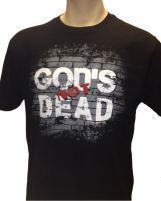 Does your main character wear a special piece of Jesus jewelry? Merchandise! Does he or she (usually he) say some sort of catch phrase? Slap that bad boy on a t-shirt and make it merch! Get that merch into Lifeway and Family Christian Stores! But don’t just stop there, also get it into WalMart, Target, and other major retailers who will sell anything to make a buck.
Does your main character wear a special piece of Jesus jewelry? Merchandise! Does he or she (usually he) say some sort of catch phrase? Slap that bad boy on a t-shirt and make it merch! Get that merch into Lifeway and Family Christian Stores! But don’t just stop there, also get it into WalMart, Target, and other major retailers who will sell anything to make a buck.
Everyone makes money, and everyone is happy!
—
There you have it. If you are a clever, intrepid, go-getting Hollywood producer, you should be able to take these tips and blaze the trail for conquering the faith-based film market. The heavy lifting has been done for you by our crack team at the Thimblerig Institute for Faith Based Film Studies©, and now all that’s left for you to do is to take it and make it a reality.
Shhhh… can you hear it? Is that the purr of a Jaguar’s engine?

January 2, 2015
The Thimblerig Do You Believe? Little Cross Challenge
Keep reading to see what the Thimblerig’s Do You Believe?��Little Cross Challenge is…
I just watched the trailer for trailer for Pureflix’s upcoming new film, Do You Believe?, and after the success of God’s Not Dead, it looks like the filmmakers are attempting to up the ante, going from a film with four separate stories that eventually interact to perhaps as many as twelve.
Christian filmmakers continue trying to establish themselves, and continue their attempts at��being��taken seriously by non-Christian and cynical Christian moviegoers. To help with this,��Pureflix has taken part of God’s Not Dead‘s $60,000,000 worldwide box office and invested it in casting some familiar faces (Mira Sorvino, Sean Astin, Cybil Shepherd, Lee Majors).
I wish Pureflix all the best with this new film, and only hope that the filmmakers took some of the constructive criticism of God’s Not Dead��to heart when developing Do You Believe? (including the critiques in my own review). ��As I’ve said before, Christians have the greatest story ever told to tell, and we should be making the best films on the market.
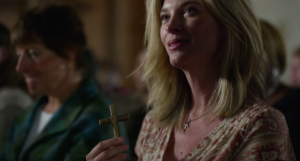 That being said, I find myself rather unsettled by the end of the trailer, and the focus on the tiny little wooden crosses. ��Knowing that a huge part of filmmaking these days (Christian or otherwise) is merchandizing, I fear that come March 2015, the tiny little wooden Do You Believe? crosses will be mass produced in China or Venezuela and sold in Christian bookstores and Walmarts all across the fruited plains.
That being said, I find myself rather unsettled by the end of the trailer, and the focus on the tiny little wooden crosses. ��Knowing that a huge part of filmmaking these days (Christian or otherwise) is merchandizing, I fear that come March 2015, the tiny little wooden Do You Believe? crosses will be mass produced in China or Venezuela and sold in Christian bookstores and Walmarts all across the fruited plains.
This fear has led me to create “The Thimblerig Do You Believe? Challenge”, and��I invite anyone to join me in this challenge at any level.
The Thimblerig Do You Believe? Challenge
So here goes: ��I officially state here and now that if the makers of Do You Believe? do not sell little Do You Believe? wooden crosses as a part of the merchandising of this film, I will personally donate $200 to the charity of David A.R. White’s choosing.
Also, if the��makers of Do You Believe?��use some of that 60 million to make the crosses but give them away, or even if they sell the crosses but give all the proceeds to charity, I will donate the money.
I know $200 is not much when compared to the potential revenue of what could be the next WWJD bracelet, but to me, it’s pretty substantial. ��I feel particularly strong about this since Do You Believe?��apparently focuses on��the importance of the cross, and it would be particularly distasteful and even despicable if they turned the cross��into just another avenue for building profits.
Hopefully that won’t be the case.
Anyone want to join the challenge? ��The more people that join, the more likely the message will get back to the folks at Pureflix.
(Special thanks to Doc Benson for posting about this on Facebook, and drawing my attention to the trailer)

The Thimblerig Do You Believe? Challenge
Keep reading to see what the Thimblerig’s Do You Believe? Challenge is…
I just watched the trailer for trailer for Pureflix’s upcoming new film, Do You Believe?, and after the success of God’s Not Dead, it looks like the filmmakers are attempting to up the ante, going from a film with four separate stories that eventually interact to perhaps as many as twelve.
Christian filmmakers continue trying to establish themselves, and continue their attempts at being taken seriously by non-Christian and cynical Christian moviegoers. To help with this, Pureflix has taken part of God’s Not Dead‘s $60,000,000 worldwide box office and invested it in casting some familiar faces (Mira Sorvino, Sean Astin, Cybil Shepherd, Lee Majors).
I wish Pureflix all the best with this new film, and only hope that the filmmakers took some of the constructive criticism of God’s Not Dead to heart when developing Do You Believe? (including the critiques in my own review). As I’ve said before, Christians have the greatest story ever told to tell, and we should be making the best films on the market.
 That being said, I find myself rather unsettled by the end of the trailer, and the focus on the tiny little wooden crosses. Knowing that a huge part of filmmaking these days (Christian or otherwise) is merchandizing, I fear that come March 2015, the tiny little wooden Do You Believe? crosses will be mass produced in China or Venezuela and sold in Christian bookstores and Walmarts all across the fruited plains.
That being said, I find myself rather unsettled by the end of the trailer, and the focus on the tiny little wooden crosses. Knowing that a huge part of filmmaking these days (Christian or otherwise) is merchandizing, I fear that come March 2015, the tiny little wooden Do You Believe? crosses will be mass produced in China or Venezuela and sold in Christian bookstores and Walmarts all across the fruited plains.
This fear has led me to create “The Thimblerig Do You Believe? Challenge”, and I invite anyone to join me in this challenge at any level.
The Thimblerig Do You Believe? Challenge
So here goes: I officially state here and now that if the makers of Do You Believe? do not sell little Do You Believe? wooden crosses as a part of the merchandising of this film, I will personally donate $200 to the charity of David A.R. White’s choosing.
Also, if the makers of Do You Believe? use some of that 60 million to make the crosses but give them away, or even if they sell the crosses but give all the proceeds to charity, I will donate the money.
I know $200 is not much when compared to the potential revenue of what could be the next WWJD bracelet, but to me, it’s pretty substantial. I feel particularly strong about this since Do You Believe? apparently focuses on the importance of the cross, and it would be particularly distasteful and even despicable if they turned the cross into just another avenue for building profits.
Hopefully that won’t be the case.
Anyone want to join the challenge? The more people that join, the more likely the message will get back to the folks at Pureflix.
(Special thanks to Doc Benson for posting about this on Facebook, and drawing my attention to the trailer)

December 26, 2014
Six Things to do after Downloading a Free Kindle Book
The best thing two things about owning a Kindle (or other e-reader) are (1) that you can carry a ton of books around in a tiny device and (2) so many free books are available. I purposefully avoided the e-reader experience for years, because I loved the feel of holding a real book in my hands. However, since I live overseas, I finally took the plunge and I’ve never looked back.
And the multitude of free books you can download on a Kindle! It’s amazing, and fantastic! I’ve spent quite a bit of time filling my Kindle with free books. It’s a brave new world, indeed.
 And then last March, I self-published my first novel. Suddenly, one of those free books out there had my name on it. And just as suddenly, the books in my Kindle device took on a different meaning.
And then last March, I self-published my first novel. Suddenly, one of those free books out there had my name on it. And just as suddenly, the books in my Kindle device took on a different meaning.
Now, they weren’t just freebies meant to be downloaded and forgotten, they were dreams put to the page. Each free book I’d downloaded now represented years of hard work. Stories that had been taken from idea, to draft, to beta readers, to revision, to hard critiques, to killing the darlings, to more revision, to putting it aside and picking it up three years later, to becoming determined to finish even if it resulted in death, to typing until callouses formed on fingertips, until at last, that final copy emerged.
 This is true of every single free book that you have downloaded, with the possible exception of Baboon Fart Story by Phronk.
This is true of every single free book that you have downloaded, with the possible exception of Baboon Fart Story by Phronk.
And so, I want to make an appeal to you Kindle free ebook downloaders. These are six things you can do after downloading a free Kindle book if you really want to help the authors who are giving you this free entertainment.
Understand that each step involves a bit more effort and investment on your part, but each will be increasingly appreciated by the author.
1) Download the book!
It seems pretty obvious, but it needs to be said that if you see a book that looks interesting, go ahead and download it. Self-published authors really want to see their books climb as high as possible on the Amazon lists, and your solitary download will help that to happen. So if the book looks interesting to you, go ahead and hit that “buy now” button and get your free book. That action alone will be doing the author a favor.
2) Share the free book info with your friends
 A book is only free for a limited time, and so the author is depending on you helping to spread the word in a timely fashion. After you download, go ahead and share the info with your friends, and water the author’s attempts at grass roots marketing. Facebook, Twitter, Instagram, Pinterest, Google+, whatever your social media outlet of choice – let folks know that an interesting-looking book is out there for free. Just use Amazon’s handy share buttons.
A book is only free for a limited time, and so the author is depending on you helping to spread the word in a timely fashion. After you download, go ahead and share the info with your friends, and water the author’s attempts at grass roots marketing. Facebook, Twitter, Instagram, Pinterest, Google+, whatever your social media outlet of choice – let folks know that an interesting-looking book is out there for free. Just use Amazon’s handy share buttons.
3) Actually read the book!
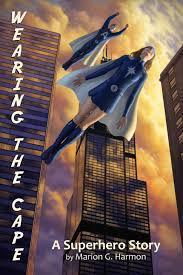 This is where it starts to get a bit more complicated. As I said before, I also have a Kindle full of free books that I may or may not get to, but as we head into the new year, I am making a commitment to actually go through those books and give them a shot. At some point, they looked like something I might want to read, so I should give them the benefit of the doubt. Right? Who knows? I may discover a great new author! This happened for me when I downloaded and actually read Marion Harmon’s Wearing the Cape – a great new take on the superhero genre.
This is where it starts to get a bit more complicated. As I said before, I also have a Kindle full of free books that I may or may not get to, but as we head into the new year, I am making a commitment to actually go through those books and give them a shot. At some point, they looked like something I might want to read, so I should give them the benefit of the doubt. Right? Who knows? I may discover a great new author! This happened for me when I downloaded and actually read Marion Harmon’s Wearing the Cape – a great new take on the superhero genre.
4) Write a review.
For some reason, this seems to be the most difficult step for people. For example, I’ve given away literally a couple of thousand digital copies of Thimblerig’s Ark since it was first published back in March, and since that time, I’ve had 22 people write reviews. It’s actually quite simple to write a review, but it might just be one of the most important things you can do for the writer – especially when they are self-published.
Understand, I’m not suggesting that you go all Kirk Cameron on this and inflate the reviews, but if you will actually take a moment and write an honest critique of the story, it will help immensely. Even if your review is negative, it shows future potential readers that the reviews are honest.

And don’t be intimidated by the idea of writing a review, because it doesn’t have to go into great depths. For example, one of the reviews that Thimblerig’s Ark has received says simply, “Loved it….reminds me of Watership Down almost. Reading it to my son now! Good book to read to a class!”, and that was a great review!
5) Buy the Book.
I know, I know. The book was free, you downloaded it, shared it with your friends, read it, and reviewed it. And now I have the gall to suggest that you drop some of your hard-earned cash on a book you’ve read? As I said before, this is a list that involves increasing commitment. As a writer, I am very happy when someone reads and reviews my book. However, several friends told me that they could easily drop the $2.99, and that small support meant the world to me.
But what if the self-published author isn’t your friend? It will still be a huge encouragement to them if you liked the book enough to actually take the time to invest in it. Remember, they haven’t been contracted by some big publisher to write – they are writing because they love writing. And if they are anything like me, they would love to be able to do it full time, and deliver new books year after year. Certainly your one purchase won’t enable us to quit our day jobs, but it will be an enormous pat on the back and encouragement to keep on writing.
6) Gift the Book.
And if you really, really liked the book, then take the plunge and order copies for your friends. Give the print copy of the book as a gift! Send it to friends for birthdays, or give it to your dad on Father’s Day, or to the ladies in your life on International Women’s Day.
This will accomplish several things. First, it will be a financial support to the author as you purchase multiple copies. Second, it will help get his or her writing out there to new potential readers. Third, it will drive up sales, which will help the author to be taken seriously by others.
And you have to get friends and family gifts anyway, right? Give a gift to a budding author at the same time.
–
So,intrepid Kindle downloaders, get out there and collect the free books. But don’t stop there! Read, review, spread the word, and actually buy some! This is what will enable writers to continue doing what they love to do, and you’ll be able to continue reaping the benefits!
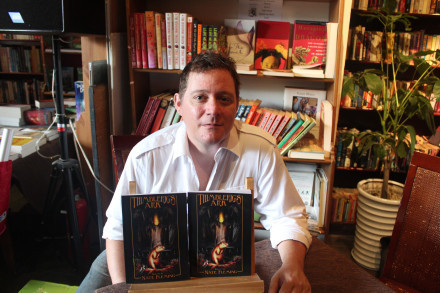
Author Nate Fleming at a book signing at the Bookworm, Chengdu, China – summer 2014
And – in the shameless self-promotion portion of this blog post, I’d ask that you go ahead and start by downloading my book, Thimblerig’s Ark, which is available for free until December 28, 2014!

December 22, 2014
Thimblerig’s Ark �����FREE Christmas Download!
As a special Christmas gift to you, Thimblerig’s Ark will be available as a FREE��Kindle download from December 24 to December 28, 2014 (PST)! ��Please help spread the cheer by passing on the good news! ��Share this exciting info��on all your social media platforms.
If you tweet, you can just copy this onto your Twitter feed starting on Christmas Eve:
You know about #Noah, but not the animal’s story. It’s not what you’re expecting. Thimblerig’s Ark, FREE DOWNLOAD! http://amzn.to/13v130F
“Thimblerig’s Ark is a really fun book with lots of action and lovable characters.” 4-LAN
“a great read, it kept me interested and I was completely invested in the story!” Lena K.
“Quirky characters set up a gentle tale with a solid message behind it.” Mark L.
“I’d recommend this book to animal lovers who like adventure stories with a touch of comedy.” stansby
“It has been a real pleasure to read this book full of adventure, humor, vivid and well developed characters…” Andrey
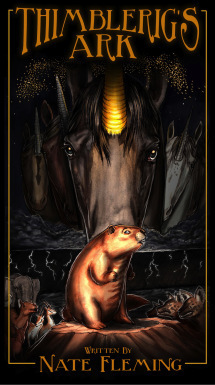 Thimblerig is a little groundhog with big problems.
Thimblerig is a little groundhog with big problems.
He���s a loner con-artist who���s losing his mojo; the wild dogs who run the forest harass him at every turn; he���s having vivid nightmares of apocalyptic floods; and worst of all, he believes he sees unicorns when everyone knows unicorns are only the stuff of legend.
But what one animal might call a problem, Thimblerig calls an opportunity.
In a moment of inspiration, he comes up with the ultimate con: persuade as many suckers as he can that a world-ending flood is coming; the fabled unicorns have told him where the only safe place will be; and only he can lead them to safety.
All for a reasonable price, of course.
When the flood really does come, Thimblerig has a choice: either save the ones who trusted him, or lose everything.
And that���s when he discovers that his problems have only just begun.
—
Inspired by an Irish pub song about why the unicorn missed out on Noah’s Ark, Thimblerig’s Ark��is a Narnian-style fantasy novel that��looks at how the animals all made it there in the first place, focusing on a con-artist groundhog named Thimblerig.
—
Coming soon: ��Thimblerig’s Ark Book Two: Forty Days and Nights

Thimblerig’s Ark • FREE Christmas Download!
As a special Christmas gift to you, Thimblerig’s Ark will be available as a FREE Kindle download from December 24 to December 28, 2014 (PST)! Please help spread the cheer by passing on the good news! Share this exciting info on all your social media platforms.
If you tweet, you can just copy this onto your Twitter feed starting on Christmas Eve:
You know about #Noah, but not the animal’s story. It’s not what you’re expecting. Thimblerig’s Ark, FREE DOWNLOAD! http://amzn.to/13v130F
“Thimblerig’s Ark is a really fun book with lots of action and lovable characters.” 4-LAN
“a great read, it kept me interested and I was completely invested in the story!” Lena K.
“Quirky characters set up a gentle tale with a solid message behind it.” Mark L.
“I’d recommend this book to animal lovers who like adventure stories with a touch of comedy.” stansby
“It has been a real pleasure to read this book full of adventure, humor, vivid and well developed characters…” Andrey
 Thimblerig is a little groundhog with big problems.
Thimblerig is a little groundhog with big problems.
He’s a loner con-artist who’s losing his mojo; the wild dogs who run the forest harass him at every turn; he’s having vivid nightmares of apocalyptic floods; and worst of all, he believes he sees unicorns when everyone knows unicorns are only the stuff of legend.
But what one animal might call a problem, Thimblerig calls an opportunity.
In a moment of inspiration, he comes up with the ultimate con: persuade as many suckers as he can that a world-ending flood is coming; the fabled unicorns have told him where the only safe place will be; and only he can lead them to safety.
All for a reasonable price, of course.
When the flood really does come, Thimblerig has a choice: either save the ones who trusted him, or lose everything.
And that’s when he discovers that his problems have only just begun.
—
Inspired by an Irish pub song about why the unicorn missed out on Noah’s Ark, Thimblerig’s Ark is a Narnian-style fantasy novel that looks at how the animals all made it there in the first place, focusing on a con-artist groundhog named Thimblerig.
—
Coming soon: Thimblerig’s Ark Book Two: Forty Days and Nights

December 10, 2014
Interstellar: The Ultimate Christmas Movie
My family loves Christmas movies. Each year, we can’t wait for Thanksgiving to be over so we can finally dust off the Christmas movie collection, and start the annual reviewing.
Some of our favorites are probably also some of your favorites: Home Alone 1, 2, & 3 (we won’t speak of 4 & 5); The Santa Clause 1 & 2 (we won’t speak of 3); Fred Claus; Elf; National Lampoon’s Christmas Vacation; A Christmas Story; The Polar Express; and of course, Scrooge – the Albert Finney musical version of Charles Dickens’ A Christmas Carol.
Over the years I’ve realized that I love these movies for the same reason that I love Danish Wedding Cookies at Christmas: because of the memories. They remind me of my childhood, sitting with my family in the glow of the glittering lights of the Christmas tree, watching the Grinch steal from the Whos down in Whoville, while enjoying my mother’s homemade Danish Wedding Cookies and a warm mug of hot chocolate.
And I appreciate that most Christmas movies deal with important themes. For example, A Christmas Carol is about redemption, Home Alone is about the value of family, and Elf is about… Elf is about… candy?
But a funny thing has been happening as I’ve grown older. I’ve carried on the Christmas movie watching tradition with my kids, and as we’ve sat down to re-watch beloved holiday classics each year, I’ve felt less and less satisfied.
This year I’ve finally figured out why.
Like Buddy the Elf’s four major food groups (candy, candy corn, candy canes, and syrup), most Christmas movies are sweet, but not nutritious; they can be quite tasty, but they’re not very filling; they are stuffed with empty calories when I’m longing for proteins and vitamins and minerals and something to help me stay healthy and alive.
Presents, leg lamps, someone trying to destroy Christmas, someone trying to save Christmas, the latest flying sleigh technology, updating Dickens, computerizing Dickens, Muppetizing Dickens, Bill Murraying Dickens, missing reindeer, flying reindeer, reindeer with attitudes, violent kids left home by themselves, and any one of the hundreds of interpretations of Santa Claus… what’s the point?
There are certainly exceptions, but for the most part, each tries to be bigger and shinier and more colorful and festive than the last one, but most Christmas movies wind up ultimately small and dull and monochrome and lifeless when you hold them up to the light of the season that they are supposed to represent.
Which brings me to my new favorite Christmas movie.
Not only is Interstellar my new favorite Christmas movie, but I contend that it is one the best Christmas movies to come out of Hollywood in years. Accidentally. Obviously, Christopher Nolan didn’t set out to make a movie that had the least bit to do with December 25, but inadvertently, he did.
And then some.
To really help explain what I mean, let’s go back to the idea that most Christmas movies are too small. Interstellar is the polar opposite – a big movie, dealing with big problems, big solutions, and the nature of the universe.
You can’t get much bigger than that.
Because of the mind-crushing size of the universe, most of us don’t spend much time pondering it. Interstellar did, imagining that humanity needed to find a way across the universe to another galaxy, and the only possibility of crossing the vast distances from galaxy to galaxy would be through the bending of space and the creation of a wormhole.
Interstellar made us stop and think about the nature of the universe, and our place within it, while Christmas movies at their most shallow only ask us to wonder if we’re going to get a Red Ryder BB gun or a Turbo Man action figure, if Santa will get all the presents delivered on time, or – at their deepest – how much of a difference we make in the lives of those around us.
Just what is the nature of the universe, and what is our place in it? Think about that question for a second. And then watch this video.
That expansive universe is the playground of Interstellar.
But the video also explores the complexity of the microscopic universe, which makes me think that I wasn’t exactly right when I mentioned that Christmas films were too small. In some ways, they aren’t small enough, choosing to gloss over important details on their frenzied way to become the next holiday classic.
Oftentimes the smallest details can be the most important.
In Interstellar, director Christopher Nolan lived in the details, forgoing the use of massive amounts of green screen that most of his contemporaries overuse in such films and using half as much CGI. He had 500 acres of corn planted in the Canadian outback, built models of spaceships, sought out the most alien looking backdrops in actual physical locations, and went to the trouble of having Kip Thorne, a theoretical physicist, serve as scientific consultant for the film in an attempt to have the scientific details as accurate as possible (read this for a fascinating article about the colliding of the science and the filmmaking in the making of Interstellar).
And the heartbeat of the film is the small, touching story of the relationship between a father and a daughter. With all the huge set pieces and impressive special effects, the film boils down to the love between Cooper (Matthew McConaughey) and his daughter Murphy (Mackenzie Foy/Jessica Chastain/Ellen Burstyn).
It may not be nearly as impressive as the “twin paradox” of Nolan’s film, but I think I have proven my point that Interstellar is simultaneously a huge movie and a small movie. However, I still haven’t proven that it deserves to be my favorite Christmas movie.
But before I go there, I need to pause and qualify something about myself, as there is still a fact about me that might have a direct impact on the argument.
I believe that this amazingly, mind-boggling, incomprehensibly unfathomably enormous place that we call the universe was created.
By God.
If you disagree with that statement, you’re more than welcome to continue reading, but you will be disagreeing with the foundation of my argument. Please go on enjoying Interstellar as good science fiction cinema and It’s a Wonderful Life or Die Hard as entertaining holiday flicks, but you can forget about me and this blog post. After all, I’m not trying to argue for the existence of God, nor am I trying to prove some “Young Earth”, “Old Earth” argument. I’m simply trying to explain why Interstellar is my new favorite Christmas movie.
The car comes skidding to a halt as the believer response comes almost immediately: “Interstellar doesn’t mention God at all, and actually seems to go out of its way to avoid talking about God! How could that possibly be a Christmas movie?”
My simple answer is this: look at the list of the top 25 Christmas movies from Rotten Tomatoes and tell me how many of those movies don’t mention God, and actually seem to go out of their way to avoid talking about God.
Point taken?
With that question out of the way, let’s head back out into the universe, and in case you’re wondering, we’ll not go gently into that good night.
The God of Scripture created the universe, and any open reading of the Scriptures will support that idea. For example:
 Thinking back to that video about the size of the universe which is theorized to be at least 46 billion light years across, it blows my mind to imagine that the God we read about in Scripture is the same God who made it all (for more about the size of the universe, visit this fantastic site.) This is one of the reasons why those of us who believe in that God also want to worship him, because of the idea that He is so indescribably immense that He can make something as indescribably immense as the universe.
Thinking back to that video about the size of the universe which is theorized to be at least 46 billion light years across, it blows my mind to imagine that the God we read about in Scripture is the same God who made it all (for more about the size of the universe, visit this fantastic site.) This is one of the reasons why those of us who believe in that God also want to worship him, because of the idea that He is so indescribably immense that He can make something as indescribably immense as the universe.
But it doesn’t stop there. That same God is the God of the details, as well.
But even that’s not the end of it – the immensity and infinitesimality of the universe. Those are only the parts of the universe that we can experience with our senses. God is also the God of the unseen creation – what we might call heaven.
What do we know about heaven? Most people have an opinion of heaven, based on their own hopes. People see it as a place full of puffy clouds, with angels playing harps, and everyone getting the things they wanted to get down on earth.
But what does Scripture tell us about heaven, as another part of God’s creation?
Some of the language of heaven in Scripture is poetic, and some is literal. Regardless, when you read these and other Scripture passages about heaven, you come away with at least a few basic ideas about it: Heaven is fantastic; heaven can accommodate a lot of people; and experiencing heaven will involve giving all of one’s attention and worship to the One who made heaven and us.
So, we’ve established that according to the Scripture, God made the universe and everything in it, and God made heaven, and God reigns over it all. While this might be nice to consider from a theological standpoint, it still doesn’t bring us any closer to understanding how Interstellar could be connected – even loosely – to Christmas.
Hang with me.
The connective tissue is found in identifying one key player who we’ve not mentioned yet. Who was there with God while all of this was being done? Who was there while the hairs on our head were being counted? While the stars were being hung in the sky? While the foundations were being laid in the Father’s house?

SACRED HEART OF JESUS by Stephen B. Whatley
Jesus. The Creator.
Jesus. Who transcends time.
Jesus. Who transcends space.
We need to stop and consider Him for a moment, this person we’re talking about.
According to Scripture, Jesus was there at the beginning, “with God… and was God”, making all things, speaking things into existence as The Word. He made everything in heaven and on earth, visible and invisible, all things were created through him and for him, from the farthest galaxy to the smallest quark, and everything in between. He made them. He was Lord over the heavens and earth before time began.
And he chose to leave it all.
To become one of these.
The one who created the heavens and the earth, now helpless.
Utterly Dependent.
Without knowledge.
Unable to feed himself when hungry.
Unable to wipe his own bottom after a big poop.
The Word of God, who spoke the universe into creation, unable to say his own name and having to learn again how to speak.
How to roll over. How to crawl. How to walk. How to run.
The one who ruled over the place where there was no pain, suffering, tears, or death chose to enter into a reality as a helpless, tiny baby on a insignificant little rock in the farthest corner of the universe where he would experience pain, suffering, tears, and death.
Why?
Why would he do this?
Was it a grand experiment? The Christ grew bored in heaven, and so he decided that becoming a human would be an interesting experiment?
Was Christ like King Richard in Ivanhoe, who disguised himself as a wandering knight as he sought out adventure?
No.
It was a rescue mission.
 Let’s return back to Interstellar for a moment. In Christopher Nolan’s film – as in reality – space is vast, empty, and lifeless. At one point early in the film, Romilly (David Gayasi), one of the scientists, is having a difficult time adjusting to the idea of being in a small spacecraft voyaging through the deep regions of space, and so pounds on the side of the ship in frustration, and exclaims, “Millimeters of aluminum— that’s it! And nothing within millions of miles that won’t kill us in seconds.”
Let’s return back to Interstellar for a moment. In Christopher Nolan’s film – as in reality – space is vast, empty, and lifeless. At one point early in the film, Romilly (David Gayasi), one of the scientists, is having a difficult time adjusting to the idea of being in a small spacecraft voyaging through the deep regions of space, and so pounds on the side of the ship in frustration, and exclaims, “Millimeters of aluminum— that’s it! And nothing within millions of miles that won’t kill us in seconds.”
As far as science has been able to figure out, there is nothing out there like what we have here. Our tiny little home, our “pale blue dot” as Carl Sagan called it. Scientists posit that there might be others out there, far distant planets capable of sustaining life, and while we’re hopeful that other planets exist like our own, right now this is the only show in town. The only place that God created with beings like us, beings made imago dei, in His own image (Genesis 1:27).
And what do we bring to the table?
In Interstellar, Dr. Brand (Anne Hathaway) nails it.

Keyes, Greg (2014-11-11). Interstellar: The Official Movie Novelization (Kindle Locations 1055-1057). Titan. Kindle Edition.
And we get a glimpse into the rescue mission here. He created us on this pale blue dot, and for some unknowable reason, He loves us. We’re told this over and over in Scripture, with perhaps the most famous passage being this:
And how did we repay him? By rebelling against him, and insisting on doing things our way. From the very beginning, humanity has been characterized by arrogance, pride, lust, vengeance, greed, anger, hatred, evil.
And this evil that exists in each of us is what keeps us from being able to be with him. After all, Scripture tells us this very important truth about heaven:
Unfortunately, that means the door is closed on all of us, because all of us are impure, we’re all shameful and deceitful. And so we needed rescuing.
And who better to rescue us, than the One who created us?
And just like Christopher Nolan’s wormhole opened the doorway to a far away galaxy, Jesus Christ’s decision to being born a baby, to live the sinless, perfect life that we were unable to live, and then to die on the cross in our place opened a doorway that enabled us to cross from this world to his.
 When I compare Christopher Nolan’s Interstellar to any of the films that we typically watch at Christmas, those movies come up woefully short. They are timid, they are insufficient, they don’t inspire wonder or awe, they don’t give us any sense of the majesty of the world and the universe that God created. They don’t give a hint or a tease about the condition of humanity that would necessitate the need for Christmas.
When I compare Christopher Nolan’s Interstellar to any of the films that we typically watch at Christmas, those movies come up woefully short. They are timid, they are insufficient, they don’t inspire wonder or awe, they don’t give us any sense of the majesty of the world and the universe that God created. They don’t give a hint or a tease about the condition of humanity that would necessitate the need for Christmas.
I’ll still watch them, and I’ll still enjoy them for what they are, and if I get up the nerve, I might even try to reproduce my mother’s Danish Wedding Cookies for my own kids, but they don’t come close to pointing me in the direction of the one who was born in that stable two thousand years ago.
Interstellar did that, in spades.
Thank you, Christopher Nolan, for making a big, bombastic, small, heartfelt film that made me remember a certain little universe-creating baby born in a manger in Bethlehem.
Thank you for pointing me back to Jesus.
Because He is the one I seek.























